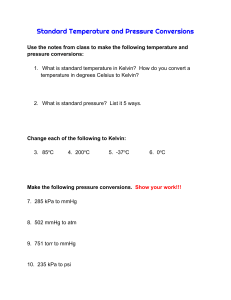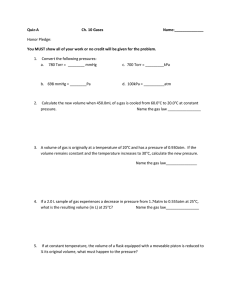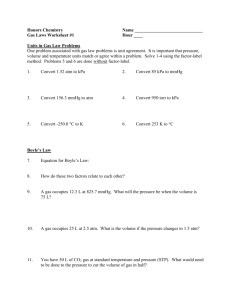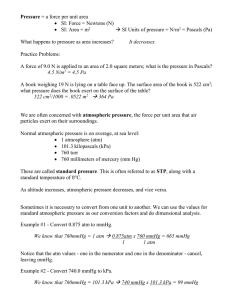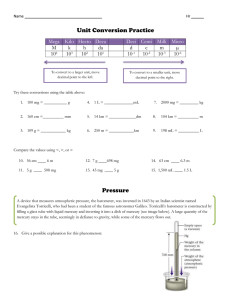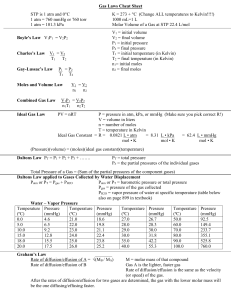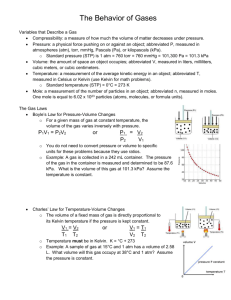Name__________________________ Block_____ Measuring
advertisement
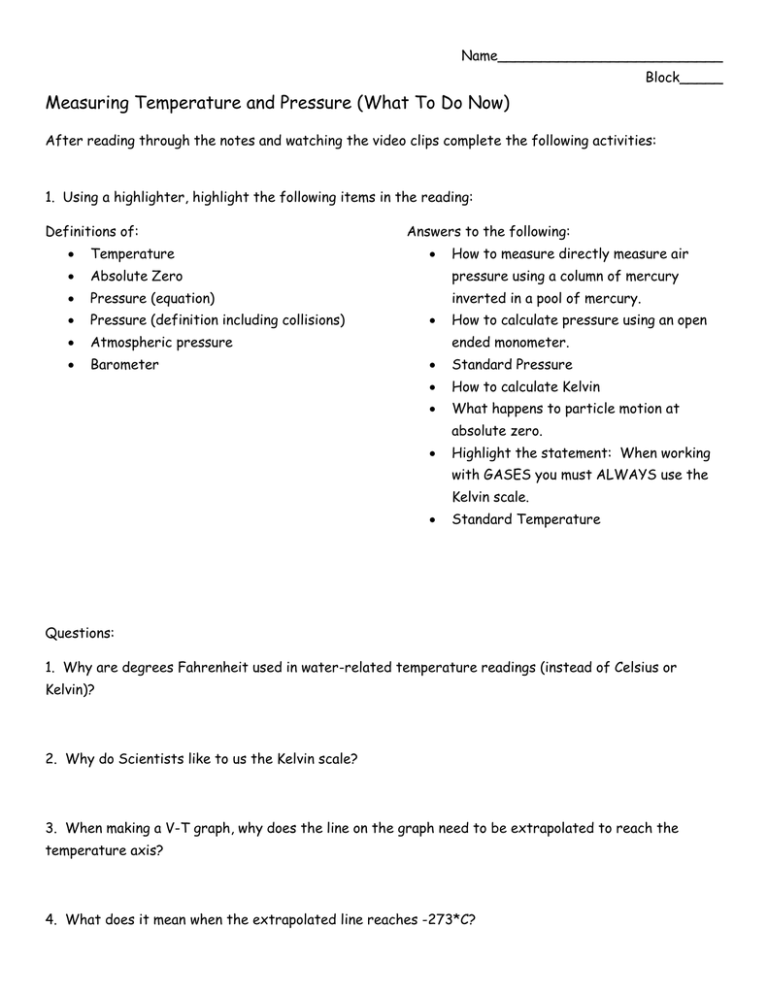
Name__________________________ Block_____ Measuring Temperature and Pressure (What To Do Now) After reading through the notes and watching the video clips complete the following activities: 1. Using a highlighter, highlight the following items in the reading: Definitions of: Answers to the following: Temperature Absolute Zero pressure using a column of mercury Pressure (equation) inverted in a pool of mercury. Pressure (definition including collisions) Atmospheric pressure Barometer How to measure directly measure air How to calculate pressure using an open ended monometer. Standard Pressure How to calculate Kelvin What happens to particle motion at absolute zero. Highlight the statement: When working with GASES you must ALWAYS use the Kelvin scale. Standard Temperature Questions: 1. Why are degrees Fahrenheit used in water-related temperature readings (instead of Celsius or Kelvin)? 2. Why do Scientists like to us the Kelvin scale? 3. When making a V-T graph, why does the line on the graph need to be extrapolated to reach the temperature axis? 4. What does it mean when the extrapolated line reaches -273*C? 5. Provide two values for absolute zero. 6. STP is a common acronym for Standard Temperature and Pressure. You will be expected to know these values. Using what you learned from the reading what are the values for STP? 7. Calculate the pressure of the gas in the flask connected to the manometer in Problems 1 and 2 below. 8. What do we mean by atmospheric pressure? What causes this pressure? 9. How do we measure atmospheric pressure? Is atmospheric pressure the same everywhere on the surface of the earth? Questions 10-12 below: If the sentence uses Celsius, rewrite it using Kelvin, or vice versa. Show your math work. 10. It has to be 0°C or colder before it will snow outside. 11. If your body temperature is 313K, you probably have the flu. 12. I prefer my classroom to be 296K. 13. Which of these is most likely to be a temperature on a cool fall day? Show the math that justifies your answer. A. 290 K B. 70ºC C. 63 K D. 240K 14. Make the following conversions: (Show your work) 1 atm = 760 mmHg = 760 torr = 14.7 psi = 101.3 kPa 550 mmHg x ____________ = kPa 55 psi x ____________ = mmHg 325 kPa x ____________ = atm 2284 torr x ____________ = kPa 48.0 mmHg x ____________ = torr 1.85 atm x ____________ = mmHg 15. To determine the relationship between temperature and volume do the following: Watch the movie on this link: http://chemmovies.unl.edu/chemistry/dochem/dochem076.html (you will need to click the movie link in the upper left hand corner of the page). Predict the effect of replacing the mercury with a nonvolatile oil. How is the volume of the gas related to the length of the column for each point? Use this data to plot a graph and estimate absolute zero by expratoplating a line. (Temperature goes on the x-axis—start with -330 K and the length is representing the volume of the gas). Temperature (°C) Length (cm) 95 21.8 62 19.1 22 17.3 4 16.1 -11 15.8 What was your value for absolute zero from this graph?
